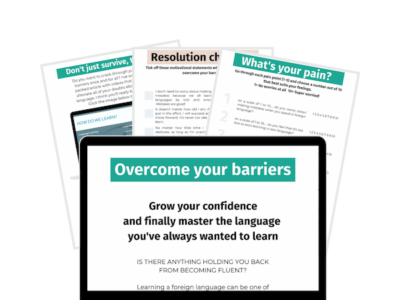How to use non so se in Italian?
If you’re wondering what non so se means in Italian and how to structure it, you’re in the right place.
In English, non so se means I don’t know if and is usually followed by a verb.
Even if some Italian native speakers would go for the subjunctive or the indicative verbal moods, they wouldn’t be able to explain why because there’s no right or wrong answer.
It depends on what you want to say and how formal you want to sound.
What is the conjugation of sapere?
Before we go into more detail, let’s review the conjugation of the verb sapere.
Sapere is an irregular verb in the present indicative, which means it doesn’t follow a pattern.
Here’s its conjugation:
| io | so |
| tu | sai |
| lui/lei | sa |
| noi | sappiamo |
| voi | sapete |
| loro | sanno |
If you’re talking about yourself you can say non so se. But if you’re talking about someone else, you can say non sai se (you don’t know if).
Non sapere se: indicative or subjunctive?
We already mentioned that we use the subjunctive to express doubt, uncertainty, and hypothetical situations.
This is why, in theory, since non sapere (not to know) explicitly expresses uncertainty, we should use the subjunctive after it.
However, in spoken Italian, it is very common to find the indicative. It just sounds more natural and less formal.
Your choice will depend on how formal you want to sound:
- If you use the indicative, you’ll sound more natural and spontaneous.
- If you use the subjunctive, you’ll sound more intellectual and unnatural.
This expression is not as strict as other expressions that do need the subjunctive and wouldn’t accept the indicative.
For instance, purché (provided that) and affinché (in order for something to) trigger the subjunctive but they are very formal words that you would find in written texts.
How to use non sapere se + indicative?
Let’s focus on non sapere se followed by the indicative tense.
The indicative is just the “normal” and most common verbal mood in Italian, as opposed to the subjunctive, which is less common.
As we already mentioned, most of the time, the indicative sounds more natural.
And, since sometimes native speakers tend to go for what sounds more spontaneous, you’ll hear non so se followed by the indicative very often.
The indicative has different tenses: past, present, and future.
Let’s have a look at some examples of these three tenses:
Non so se sono andati al cinema.
I don’t know if they went to the cinema.
Non sappiamo se vengono.
We don’t know if they’re coming.
Non so se funzionerà.
I don’t know if it’ll work.
How to use non sapere se + subjunctive?
As we said, the subjunctive can sometimes sound very formal and unnatural. However, interestingly, sometimes it sounds better.
If you’re not sure, you can always ask a native speaker or just go for it. In any case, you won’t be wrong.
Like with the indicative, we can use all tenses of the subjunctive:
Non so se sia possibile.
I don’t know if it’s possible.
Non so se parlasse sul serio.
I don’t know if she was speaking seriously.
Non sappiamo se Antonio abbia avuto il coraggio di parlare.
We don’t know if Antonio had the guts to talk.
How to use non sapere se + infinitive?
We can also use the infinitive after non sapere se.
The infinitive is the base form of a verb, those words ending in -are, -ere, and -ire (like mangiare to eat, cadere to fall, dormire to sleep).
We can only use the infinitive if the subject of the sentence is the same in both clauses, as you can see in the sentence below:
Non so se venire stasera.
I don’t know whether to come tonight.
In the example, the person who doesn’t know is the same as the person who will or won’t go somewhere tonight.
Here’s another example:
Non sappiamo se mangiare a casa o mangiare fuori.
We don’t know whether to eat in or out.
Here, the people who don’t know are the same as the people who will or won’t eat in or out.
It’s pretty much the same in English.









